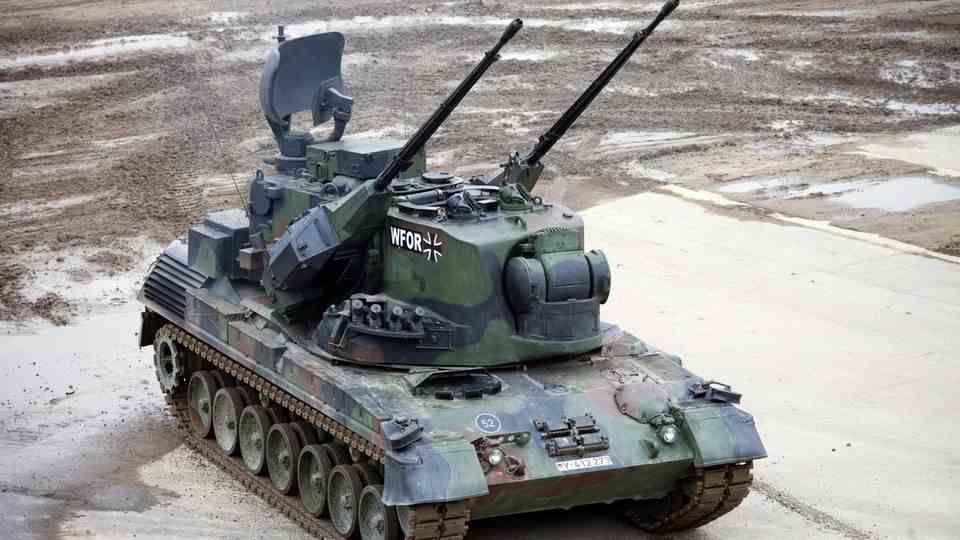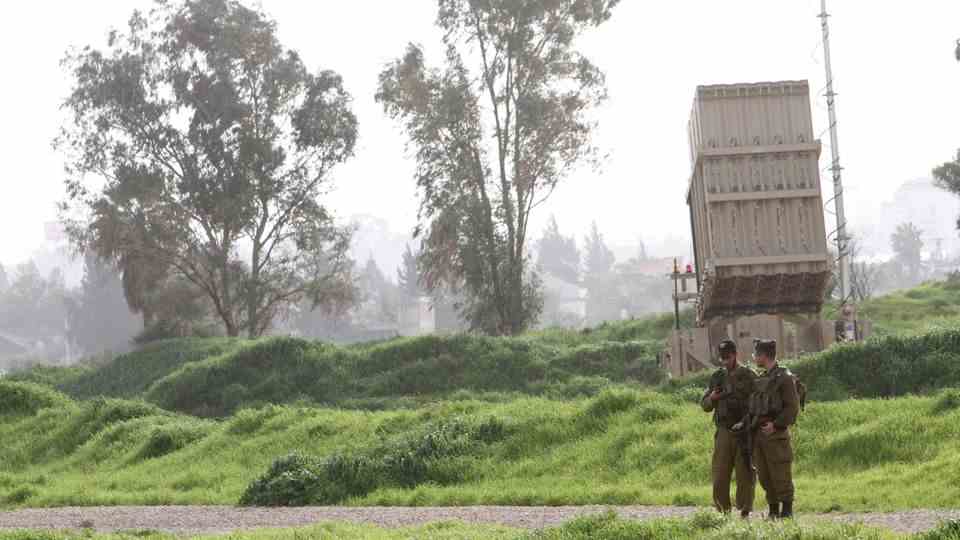German tank construction
Anti-aircraft tank Gepard – out of service, but highly dangerous
Practice shooting in Todendorf on the Baltic Sea
© Carsten Rehder/ / Picture Alliance
Kyiv is now supposed to receive large equipment from Germany. The anti-aircraft tank Gepard is armed with two heavy machine cannons and can also effectively defend the airspace as a single tank.
The cheetah is a so-called anti-aircraft tank. Its chassis is based on that of the Leopard 1, so it’s the size of a full-fledged main battle tank. However, it is not as heavily armored and there is no turret with a chariot gun on the hull. The Cheetah also has a rotating turret, but it is armed with two 35mm autocannons and its appearance is dominated by its radar.
With a comparatively short range of 5000 meters, the Gepard was built for close air defense of armored and mechanized groups. Helicopters or ground attack aircraft attacking a tank tip would be under fire from him.
The Cheetah was developed in the 1960s and ordered and delivered in the 1970s. The Bundeswehr received 420 guns, and his term of service in the Bundeswehr ended in March 2010. The heart of the machine is the 35 mm L/90 Oerlikon-KDA twin automatic cannon. A heavy caliber with an extremely high rate of fire. The relatively large caliber was able to penetrate the armor of the Soviet attack helicopters of the time. The main weapon then also required the chassis of a battle tank. The cheetah brings almost 50 tons, the light armored Soviet anti-aircraft tank ZSU-23-4 weighs less than half. The range of the Oerlikon-KDA is 5000 meters, it reaches 2500 meters high. For a successful kill, however, the target should come a little closer than just to the edge of the effective range.
era of guided missiles
Technical development has been affecting the cheetah since it was put into service. Above all, the appearance of ever smaller and more powerful guided missiles. A helicopter attacking a tank with cannons or unguided missiles must be within range of the 35 mm cannons, but if it fires a guided missile from a distance, the cheetah is powerless. The guided missiles also prevailed in anti-aircraft defense. Today, modern manpads have a longer range than the cheetah. A colossal behemoth that begs to be serviced and cared for, while a manpad can simply be loaded onto any pick-up truck in its transport box. Since the 1970s, the so-called iron anti-aircraft guns have disappeared, first the large cannons with their powerful calibers and then the smaller mobile machine cannons. And with them, the cheetah was retired. At least in the armed forces. But countries like Bulgaria continue to use the cheetah – which is probably also the reason why the German defense industry has models in stock that can be made ready for use in a timely manner.
The cheetah’s actual anti-aircraft equipment – guns, radar, laser rangefinder and ammunition – is housed in the large 15-ton turret. Although the Cheetah was built for anti-aircraft combat, it can also be used in ground combat. This was demonstrated in Syria. There, Soviet-era anti-aircraft tanks such as the ZSU-23-4 have been reactivated by Assad’s troops, even though the insurgents have no air force at all. But the firepower of its four 23 mm ASP-23 “Amur” autocannons is far more effective in urban areas than the single shots of a main battle tank.
This shows the limits of the cheetah when used against ground targets. With a battle tank, you try to keep the turret as flat as possible so as not to offer a large target. The cheetah’s turret, on the other hand, is massive and has little armor. The high stature and low protection make it dangerous to use, since the Russian troops also have modern, long-range anti-tank missiles.
Despite its size, the turret is extremely agile to allow it to track aerial targets. It can be rotated completely in just two and a half seconds. Each vehicle has surveillance radar and tracking radar, both with a range of 15 kilometers. There is also a laser range finder and fire control system.
Also effective as a single system
Even today, the cheetah is still effective. The chassis is fully off-road. In the muddy conditions in the Ukraine, however, the high weight is a disadvantage. What speaks in favor of the cheetah is that it can effectively fight air targets even as a single tank. It can also be effective if it is not integrated into a complex air defense system. It is safe to assume that US air patrol planes will inform Ukrainian troops of any Russian air movements. With this warning, the cheetah could fire on approaching Russian jets flying low. So the airspace will be even tighter for Russia. Advantage and disadvantage of the iron flak: The projectiles do not track the target independently, the fire control computer has to “hit” the enemy – on the other hand, the “dumb” projectiles are not distracted by decoys and electronic jamming measures.

Large systems such as a battle tank or an anti-aircraft tank need to be maintained and controlled. Unlike a manpad or a bazooka, a brief briefing is not enough here. Even if the tanks should be available quickly, it should take weeks before cheetahs are used in Ukraine, even with a turbo training course. But the war has now lasted more than two months – if the anti-aircraft tanks had been made available right from the start, they could now defend the Donbass.




